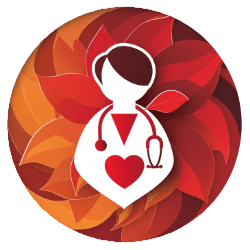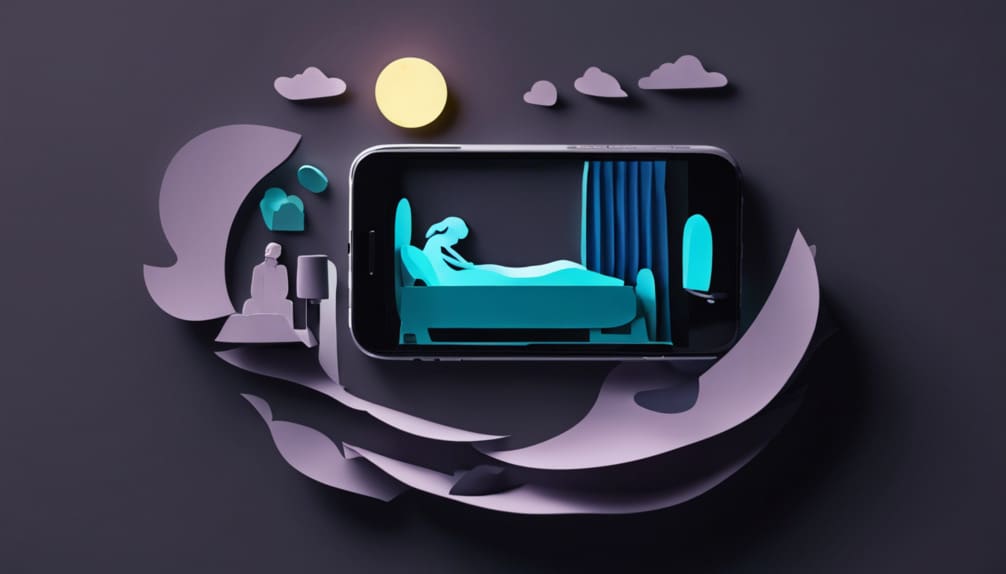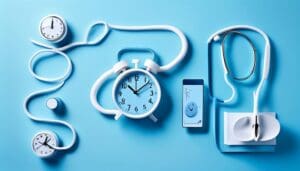Despite a staggering 80% of healthcare workers reporting symptoms related to digital overload, it seems paradoxical that few are taking steps toward a digital detox.
You’re in a profession that demands constant connectivity, from electronic health records to 24/7 availability for patient care, making it challenging to unplug. This reliance on digital tools, while indispensable for patient care, puts you at risk of digital burnout, impacting not just your physical health with symptoms like eye strain and headaches, but also your mental well-being, leading to increased cases of anxiety and depression among your ranks.
It’s essential to ask why there’s a hesitation to embrace a digital detox, considering the clear benefits for both healthcare professionals and the quality of care provided to patients. The barriers might be more complex than they appear, entwined with the very fabric of modern healthcare.
Let’s explore what’s holding back the shift toward a healthier screen-life balance and how overcoming these challenges could usher in a new era of well-being for healthcare workers.
Key Takeaways
- 80% of healthcare workers are experiencing symptoms related to digital overload, highlighting the prevalence of digital burnout in the industry.
- Constant connectivity and fear of missing out are major barriers to healthcare professionals embracing a digital detox.
- Achieving a healthy screen-life balance is essential for both the well-being of healthcare professionals and the quality of patient care.
- Offline coping mechanisms, such as engaging in physical activities and strengthening connections with the world, can help mitigate the negative effects of excessive screen time.
The Digital Burnout Epidemic
As healthcare professionals increasingly depend on digital platforms for patient care, the imbalance between screen time and real-life interactions is leading to a worrying rise in digital burnout. You’re navigating a landscape where the tools designed to streamline your work are, paradoxically, adding to your stress. It’s not just about the physical toll, like eye strain or headaches, but the impact on your mental health. The constant connectivity can leave you feeling drained, anxious, and even depressed.
Recognizing the signs of digital burnout is crucial. If you find yourself feeling constantly overwhelmed by your digital workload or if the thought of another video call fills you with dread, it’s a signal that you need to reassess your screen time. Implementing strategies for a healthier screen-life balance is essential, not just for your well-being, but for the quality of care you provide to patients.
Consider a digital detox as a start. It’s a conscious decision to reduce screen time, promoting your mental and physical health. Remember, taking breaks, engaging in outdoor activities, and practicing mindfulness aren’t luxuries but necessities for sustaining your ability to serve others effectively.
Barriers to Digital Detox
You’re aware that the nature of your work keeps you constantly connected, making it hard to step away from digital devices.
This constant connectivity, coupled with a fear of missing out, creates significant barriers to achieving a digital detox.
Understanding these challenges is critical to finding strategies that allow you to maintain a healthy balance between your professional responsibilities and personal well-being.
Constant Connectivity Demands
Healthcare professionals face significant challenges in disconnecting from digital tools, as their work demands constant connectivity for patient care and communication. The reliance on digital platforms for diagnostics and managing patient information means that finding a balance between technology use and personal well-being is tougher than ever.
While Electronic Health Records (EHRs) have revolutionized patient care, the time spent in front of screens has its drawbacks. It’s crucial to remember that an imbalanced screen life not only risks your health but can also compromise the quality of care provided.
Taking steps to achieve a healthy screen-life balance, like designing ergonomic workstations, scheduling regular breaks, and learning about healthy technology use, is essential. It’s about finding the right moment to step away, ensuring both you and your patients’ well-being.
Fear of Missing Out
While it’s crucial to manage screen time for wellness, the fear of missing out often keeps healthcare professionals tethered to their digital devices. You’re driven by a need to stay updated, worrying that disconnecting might mean missing critical patient updates or vital medical breakthroughs. This fear of missing out not only increases your screen time but also makes it challenging to embrace a digital detox, despite knowing its benefits for your well-being.
| Impact of FOMO | Effect on Healthcare Workers |
|---|---|
| Increased Screen Time | Less time for self-care |
| Difficulty Disconnecting | Higher stress levels |
| Attachment to Digital Devices | Imbalanced digital life |
| Fear of Missing Updates | Compromised personal wellness |
Understanding and overcoming this fear is key to achieving a healthier balance between your digital life and personal wellness.
Offline Coping Mechanisms
Exploring offline coping mechanisms can significantly benefit your mental and physical health by reducing reliance on digital devices. As healthcare workers dedicated to serving others, it’s crucial to remember to serve your own well-being too. Embrace digital detox strategies that align with your lifestyle and work demands.
- Engage in physical activities and outdoor exercises
- Revitalize your body by counteracting a sedentary work nature
- Reduce screen time to refresh your mind
- Strengthen connections with the world around you, fostering a sense of belonging and peace
Introduce scheduled breaks and mindfulness programs at work to mitigate the psychological impact of excessive screen time. Design ergonomic workstations and offer training on healthy technology use, promoting conscious choices that alleviate physical ailments from extended screen usage.
Make a plan for digital detox at specific times, setting clear goals, duration, and incremental check-ins. This structured approach helps reduce technology reliance and improves mental well-being. Implement everyday strategies like creating screen-free zones at home and involving your family in screen-free activities, achieving a healthier screen-life balance and encouraging everyone to embrace digital detox together.
Success Stories
After embracing offline coping mechanisms, many nurses have shared inspiring success stories about their journey towards digital detox, showcasing significant improvements in their mental health and well-being. By stepping away from the constant buzz of digital notifications, nurses have been able to redirect their focus towards patient care and fostering stronger interpersonal relationships. This shift not only enhances the quality of healthcare delivery but also enriches the workplace atmosphere.
Moreover, the positive impact of digital detox on physical health can’t be overstated. Nurses report feeling more energized, less prone to headaches, and experiencing fewer symptoms of digital eye strain.
Embracing digital minimalism has empowered these healthcare professionals to take control over their technology use. This discipline has proven pivotal in reducing burnout, a common affliction among nurses. By sharing their success stories, these nurses illuminate the path for their peers, encouraging a healthier, more balanced approach to technology use in a profession dedicated to caring for others.
Strategies for Reducing Screen Time
You’re already aware of how screen time can drain you, especially after long shifts caring for others. It’s time to explore strategies like setting timed breaks, using screen limit apps, and promoting outdoor activities to manage your digital consumption.
Set Timed Breaks
Why not consider setting regular breaks from screen use as a way to refresh your mind and enhance focus? You’re dedicated to serving others, yet it’s crucial to remember that taking care of yourself is just as important. Set timed breaks to reduce your overall screen time and make a conscious choice to step away from digital devices.
This not only helps in achieving a digital detox but also in maintaining your well-being. Consider:
- Scheduling specific times when technology isn’t allowed.
- Feel the relief of disconnecting, even for a short period.
- Experience the clarity that comes with a refreshed mind.
- Rediscover the joy of engaging in the world around you, beyond the screen.
Embrace these moments to use technology wisely and enhance your ability to serve with a rejuvenated spirit.
Use Screen Limit Apps
Exploring the use of screen limit apps can offer you a structured way to manage your screen time, ensuring a healthier balance between your digital and non-digital life. By implementing these apps, you’re taking a proactive step towards digital detox, becoming more mindful of how you engage with technology. These tools are not just about restrictions; they’re about fostering a more intentional relationship with your devices.
| Feature | Benefit | Relevance to Healthcare Workers |
|---|---|---|
| Time Limits | Reduce excessive use | Prevent burnout |
| Usage Monitor | Increase awareness of digital habits | Enhance work-life balance |
| Customizable | Tailor to specific needs and schedules | Support during long shifts |
Embracing screen limit apps can be a powerful strategy for healthcare professionals seeking to maintain their well-being in a tech-driven world.
Promote Outdoor Activities
While screen limit apps are a great start, integrating outdoor activities into your routine can further enhance your digital detox and overall well-being. By stepping outside, you’re not just clicking ‘Continue’ on another email; you’re making a primary link with the world around you. Consider how:
- Engaging in hiking, walking, or cycling can significantly reduce your screen time.
- Feeling the sun on your skin and breathing fresh air can rejuvenate your spirit.
- The rhythmic pace of walking or cycling can meditate your mind.
- Discovering new paths can spark joy and curiosity.
Outdoor activities not only promote physical health but also offer a much-needed respite for your mind, encouraging a balanced life far from the glare of screens.
Benefits of a Digital Break
Taking a digital break can significantly boost your mental well-being and decrease stress levels. In your demanding role, where you’re constantly tuned into the needs of others, embracing the benefits of a digital break could be a game-changer. A digital detox is not just about stepping away from screens; it’s a commitment to refocusing on what truly matters, both for your patients and yourself.
| Benefit | Description | Impact on Healthcare Workers |
|---|---|---|
| Improved Mental Well-being | Reduces stress and enhances emotional balance. | Leads to more compassionate care. |
| Enhanced Focus | Minimizes distractions, boosting productivity. | Improves patient care and administrative efficiency. |
| Better Sleep Quality | Promotes restfulness, crucial for recovery. | Ensures you’re well-rested for demanding shifts. |
| Increased Mindfulness | Encourages present-moment awareness. | Enhances patient interactions and personal satisfaction. |
As you serve others tirelessly, remember to carve out moments for your own well-being. A digital detox, even if brief, can reinvigorate your passion for healthcare, making every interaction more meaningful. By aligning with policies that respect your need for breaks, such as a Privacy Policy or Cookie Policy, institutions can support your journey towards a balanced digital life.
Implementing a Digital Minimalism Lifestyle
Understanding the benefits of a digital break, it’s crucial to consider how you can incorporate a digital minimalism lifestyle into your daily routine. As healthcare workers dedicated to serving others, embracing a lifestyle that prioritizes intentional technology use not only serves your well-being but also sets a positive example for those you care for.
Identify technology priorities
- Assess what’s truly essential for your work and personal life.
- Prioritize digital tools that align with your values and goals, enhancing your ability to serve effectively.
Set clear boundaries
- Establish tech-free zones and times, creating a sanctuary for your mind.
- Engage in screen-free activities with family, fostering deeper connections and shared experiences.
Practice mindfulness
- Integrate mindfulness exercises to confront and manage the psychological impacts of constant connectivity.
- Embrace moments of stillness, allowing yourself to recharge and reflect on your purpose and the profound impact you have on lives.
Implementing a digital minimalism lifestyle starts with small, intentional changes. By setting boundaries, prioritizing technology that truly matters, and embracing mindfulness, you’re not only improving your own well-being but also enhancing your capacity to serve others with presence and compassion.
Frequently Asked Questions
What Are the Barriers to Implementing Technology in Healthcare?
You’re facing a tough challenge implementing technology in healthcare. It’s not just about the tools, but also overcoming resistance, ensuring compatibility with existing systems, and addressing privacy concerns while maintaining the quality of patient care.
What Are the Barriers to Adoption of Digital Health?
You’re facing barriers in adopting digital health due to concerns about work-life balance, the complexity of new systems, and the potential for increased stress, impacting your ability to serve patients effectively and compassionately.
What Is a Negative Impact of Technology in Healthcare?
Just like too much sun can burn, excessive technology in healthcare scorches your well-being. It often leads to burnout, affecting your mental health and the quality of care you provide to those in need.
What Are the Advantages of Technology in Healthcare NCBI?
You’re curious about technology’s perks in healthcare, right? It boosts efficiency, enables telemedicine, and streamlines records. But remember, balancing tech use with your well-being is key to staying energized and focused on serving others.





